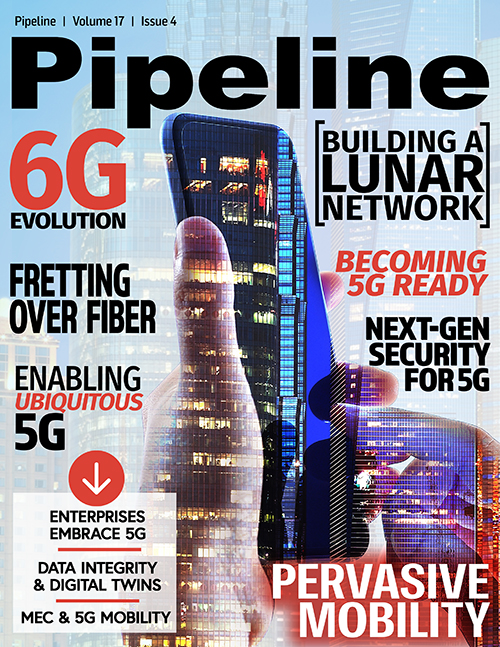Next-Gen Infrastructure: Becoming 5G-Ready
By: Andy Penley

5G, the fifth generation of mobile network standards, will deliver multi-gigabit speeds, increased availability, greater reliability and massive network capacity. Once achieved, this will make everything from critical communications between first responders to video streaming and gaming better, faster and more accessible. With such transformative opportunities on the horizon, the race to ensure the widespread rollout of 5G is on.
Still, there is a lot of progress that needs to be made in the way of underlying infrastructure to support 5G technology. The new era of networking requires a fundamentally different type of network infrastructure, and revolutionizing yesterday’s architectures demands a lot of cooperative work. As these foundations develop to support the 5G future, it’s important that all parties—infrastructure providers, communities, citizens, policymakers and more—understand what it will take to make the next generation a reality.
Particularly when it comes to increasing the number of existing network antenna locations for 5G access, commonly referred to as mobile densification, ensuring that all parties understand the infrastructure rollout process and its implications for communities is crucial for streamlining deployments. The 5G buildout and the innovative future it supports will improve the lives of individuals, communities and economies everywhere, enabling access to life-changing capabilities, so education on the hurdles and how we evolve cooperatively is key.
The 5G basics
5G is a new global wireless standard, the latest in the line of succession that began with 1G and, until now, ended at 4G. At its core, 5G is meant to connect everything everywhere in a way that empowers innovation and improves nearly all facets of day-to-day life. It is also a critical step for ensuring we can keep up with the expanding data demands that are being driven by rapid digitization. In fact, statistics currently predict that the total amount of data created, captured, copied and consumed globally will reach 149 zettabytes in 2024. To put this amount into a non-networking perspective, one Cisco analyst noted that if each terabyte in a zettabyte were a kilometer, one zettabyte would be equivalent to 1,300 trips to the moon and back again.
Now that we’re firmly in the Zettabyte Era, we need infrastructure that can keep pace—this is why Gartner forecasted that worldwide 5G network infrastructure market revenue would almost double in 2020, reaching $8.1 billion. With this new generation, devices and locations can be thoroughly connected so that the massive amounts of data that run through and between them can move faster and at higher volumes. This is the data transport and processing foundation that will enable driverless cars, smart cities and beyond—but more than that, it will enable applications that make individual lives easier, safer and perhaps even more enjoyable.
The promise of the new standard
Emergency response, healthcare, education, farming and many other crucial industries will benefit from 5G’s capabilities. For example, first responders will benefit from faster speeds and greater capacity that enable firefighters to save more lives through the use of smart building floor plans that offer insights such as real-time room temperature readings. Rescue workers will be able to access real-time video footage from aerial and remote locations during a natural disaster to help them target their response. With faster information access comes the ability to complete life-saving tasks more efficiently.
Meanwhile, teachers and students across the world will be able to more effectively continue education beyond the classroom, leveraging more interactive platforms and greater access to global online resources, including other top worldwide educators. Similarly, healthcare workers will be able to better support patients with the ability to easily communicate with the world’s best surgeons and specialists without having to travel. Furthermore, smart health wearables will monitor crucial patient vitals and provide ongoing updates to primary care providers, helping telehealth achieve an unprecedented level of effectiveness and accessibility. The same high-capacity fiber networks that enable these assorted capabilities will also be leveraged to provide better broadband services to more enterprise businesses and homes, allowing service to better align with work-from-home demands and even entertainment needs.
In short, 5G lowers the cost of access and barrier to entry for essential, or even just life-enhancing, services that may only currently be available to those who have the means to meet them where they currently exist. 5G removes roadblocks that keep many individuals and communities from achieving the quality of life and operations that today only some can take advantage of—and the opportunities are limitless.
Still, 5G’s benefits go beyond individual industries to create a comprehensive and beneficial impact on worldwide economics. Qualcomm, a global leader in wireless technology, predicts that 5G will create a global sales enablement growth trajectory of around $13.1 trillion by 2035.



















